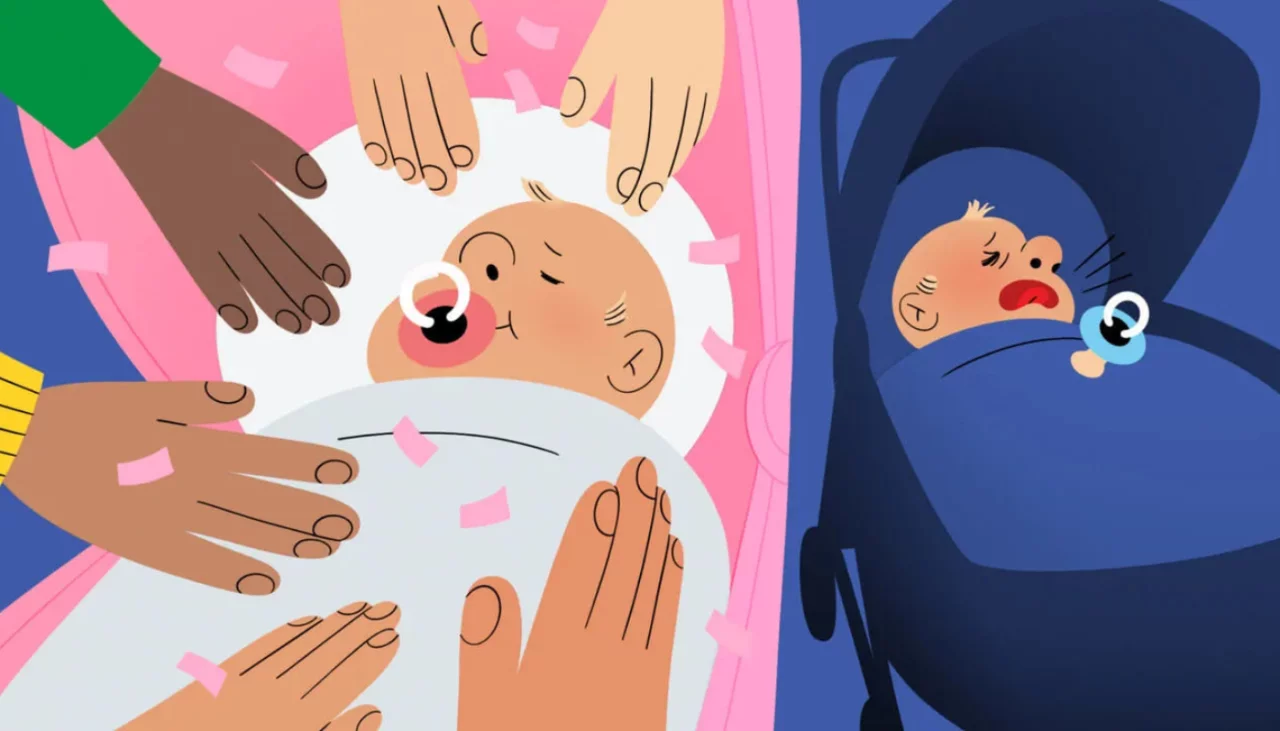
Global Trend: Girl Foeticide Aborts Are Declining
Since the 1980s, the rise of ultrasound technology enabled fetal sex determination, and in countries like China and India, parents began aborting female fetuses. However, the situation is now slowly shifting:
In 2000, estimates showed around 1.6 million fewer girls being born compared to natural birth ratios, indicating a surplus of girl abortions;
Today, that gap has shrunk to approximately 200,000, and the trend continues downward.
This global trend signals a reduction in gender-based abortions and diminishing roots of gender discrimination. The phenomenon, often called “gendercide,” has faced strong criticism in global media.
Normalization of Birth Sex Ratios
In Asian countries most affected by gender-selective abortions, birth sex ratios became heavily skewed. For instance:
In China in 2006, there were 117.8 boys per 100 girls; now it’s down to 111.2;
In India, it was 109.6 boys per 100 girls in 2010, and now it’s 106.8;
In South Korea, it has fully normalized: from 112.5 in 2005 to around 105 today.
The birth sex ratio is returning to natural levels, as slightly more boys birth compensate for higher infant mortality among them.
Gender Equality Benefits Men Too
The preference for sons exacerbated gender inequality and had unique negative impacts on men. In China, the term “bare sticks” (luǒ‑nán) refers to unmarried men who couldn’t find spouses due to the bias toward sons. Millions are affected, and current trends are beginning to reverse this.
Preference for Girls: A Positive Shift
Some regions are now favoring girls, notes The Economist:
In Japan, couples planning a single child increasingly choose a girl;
Globally, parents generally want both, but in the US and Scandinavia, if the first child is a boy, they hope the second will be a girl;
Adoptive parents often are willing to pay more for girls;
In countries offering sex selection via IVF, demand for girls is rising.
Why Parents Prefer Girls
Why the shift toward girls?
Girls are perceived as gentle, caring, and well-behaved;
Cultural norms often place elder care responsibilities on daughters;
Girls excel in education while males comprise 93% of prison populations;
In developed countries, 54% of women have university degrees versus 41% of men — a sign of gender imbalance.
Technology & Future Challenges
More options for choosing fetal sex are emerging:
Selecting X‑chromosome sperm or determining embryo sex is possible;
Though now costly and limited, these technologies may become widespread;
This could lead to new imbalances, should birth rates skew toward girls.
These developments warrant in-depth analysis on social stability, economic impact, demographic trends, and gender equality.
A Positive Trend: Advancing Gender Equality
The decline of girl abortions is a win in the global struggle for gender equality. Societies are moving toward dismantling gender stereotypes and fostering fairer norms for both sexes.
However, with advancing technology, legal, ethical, and social frameworks must be established to maintain gender balance.
Conclusion: Decline in Gender-Based Abortion — Toward an Equal Future
Worldwide decline in girl abortion rates is evident;
Asia sees normalization in birth gender ratios;
Psychological shifts reject gender stereotypes;
Governments and societies need to adopt new measures to reinforce gender equality.
This is a turning point toward a future where girls’ and boys’ rights are equally respected. Read “Zamin” on Telegram!
Ctrl
Enter
Found a mistake?
Select the phrase and press Ctrl+Enter Related news
Information
Users of Меҳмон are not allowed to comment this publication.
Users of Меҳмон are not allowed to comment this publication.













